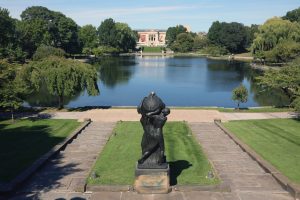Not long ago, the Grammy Award-winning rock band The Black Keys played in front of a packed Rocket Mortgage FieldHouse crowd in downtown Cleveland. By all accounts, the Keys’ 21-song set was nonstop, blues-driven rock ‘n’ roll that left fans across several generations all fired up and rarin’ to go. But the concert also had some special meaning for Clevelanders. For one thing, the Black Keys are local: Guitarist Dan Auerbach and drummer Patrick Carney formed the band in nearby Akron, Ohio, in 2001. In addition, the concert marked the grand opening of Rocket Mortgage FieldHouse, the home venue of the Cleveland Cavaliers, formerly known as Quicken Loans Arena. The city of Cleveland, Cuyahoga County and the Cavaliers had together invested $185 million to completely transform the arena, adding a stunning array of fan amenities and technology throughout, including an all-new 77,110 square foot “aluminum curtain” wall that can display 1,500 different color combos and is visible from both inside and outside the arena. All part of a brand new 42,530 square foot glass atrium. To expand the food and beverage options, the new venue offered eight new “neighborhoods”—basically, places for patrons to gather to eat and drink, rather than grabbing food and walking elsewhere—a fitting concept for a city that prides itself on the strength and character of its neighborhoods.

Cleveland has been enjoying a string of successful high-profile events lately. Last summer Major League Baseball brought its All-Star Game to Cleveland, which has now hosted more All-Star Games than any other organization. The game also marked the 25th anniversary of the Indians’ Progressive Field, a downtown stadium widely considered best in the country by baseball fans. And three years before that, the city hosted the Republican National Convention, an event of huge value to any city not just because of the economic activity and global attention it generates but also because of its metaphoric power: The choice says that a city matters not just locally or regionally, but nationally.
All of which is to say that, after decades in the wilderness of urban decline, Cleveland is back. Even just 15 years ago, says Mayor Frank G. Jackson, “You had only a few thousand people living downtown, and when work hours were over with, you could just roll a bowling ball down the street.” Now that number is approaching 20,000. They’re attracted by new hotels, a food scene that’s generated national attention, one of the country’s most important medical communities, a theater district second in size only to New York’s, new businesses, a dynamic arts and culture scene, and, crucially, a falling unemployment rate.
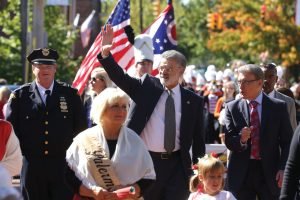
That doesn’t mean there aren’t still challenges—we’ll get to those—but the point is that Cleveland is experiencing something it hasn’t felt for a long time: hope.
To appreciate just how significant that reinvigoration is, you have to appreciate everything that had happened to Cleveland in, oh, the past half century. Granted, it’s impossible to go over all that here, so let’s just start with the big picture, beginning with the burning river.
If you’re of a certain age, you might remember the time Cleveland’s Cuyahoga River—the one around which Cleveland was founded, by Yale grad, engineer and surveyor Moses Cleaveland, in 1796—caught on fire. The date was June 22, 1969, and the Cuyahoga had been desecrated by decades of industrial waste. A report from a 1968 Kent State symposium said of the Cuyahoga that “large quantities of black, heavy oil floating in slicks, sometimes several inches thick, are observed frequently…Animal life does not exist.” Sometimes, according to Smithsonian magazine, “rats floated by, their corpses so bloated they were almost the size of dogs.”
All those pollutants had caught on fire several times before, at least back into the 1950s. So the June 22nd fire, which got about five stories high but only lasted around half an hour until firefighters extinguished it, didn’t really raise any eyebrows in Cleveland—the fire was such a run-of-the-mill event, no one even took a picture of it. Instead, the reaction came nationally, after Time ran a story about the fire and described the Cuyahoga as a river that “oozes rather than flows” and in which “a person does not drown but decays.” The subsequent outrage, which gradually gained traction locally as well, would indirectly lead to the creation of the Environmental Protection Agency and the Clean Water Act of 1972, which was specifically targeted at poisoned American rivers.
Fifty years later, the Cuyahoga is immensely cleaner—some 60 species of fish are reported to live in it. In 2019, the American Rivers conservation association named the Cuyahoga “River of the Year” to applaud its clean-up. And in a confident homage to the past, the Great Lakes Brewing Company, a local beermaker, now brews a Burning River pale ale and hosts the Great Lakes Burning River Fest, a festival of music and, yes, beer.

But back in the 1970s and for some time after, the river fire symbolized a city in trouble, and that symbolism wasn’t wrong. For the first half of the 20th century, Cleveland had been an industrial powerhouse, conveniently situated between the coasts to facilitate the transport of raw materials and manufactured goods. It was, or had been, the home of early auto manufacturing, shipbuilding and steelmaking; John D. Rockefeller had founded Standard Oil there in 1870. An abundance of jobs and opportunity had drawn immigrants from Ireland and Southern and Eastern Europe—Hungarians, Czechs, Poles—and, later, tens of thousands of African Americans from the American South. In 1920, Cleveland had a population of almost 800,000, making it one of the largest U.S. cities.
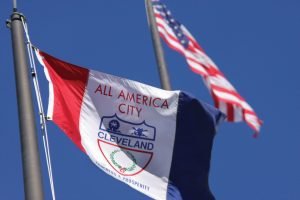
As with so many other American cities, all that economic prosperity fell under siege after World War II. Wracked by changes in the global economy, the city’s industrial base began to slip away, along with the economic opportunity and middle-class security they had provided. Manufacturing jobs went to Asia or Mexico; steel mills closed down. That economic pressure amped up existing racial tension, which led to riots in the 1960s, which produced the same result seen in Detroit, Chicago and virtually every other northern city—the whites who could afford it left town and headed to the suburbs, gutting Cleveland’s tax base (the city’s population would drop to under 400,000) and leading to massive reductions and failures in city services, particularly public education. There was, says Mayor Jackson, “a complete disinvestment in the school systems. Enrollment went from over 100,000 students to what we have now, which is 40,000.”
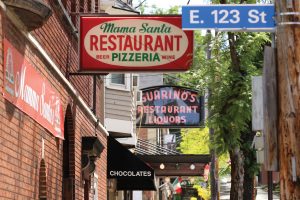
It takes many stakeholders to revive a city—businesspeople, religious leaders, philanthropists, municipal workers, investors, unions and more. But in Cleveland’s case, the one constant overseeing the city’s revitalization is Jackson. His story is remarkable: Born in 1946, he grew up poor in Central, a Cleveland neighborhood that had lost 80 percent of its 1950s population and has the highest poverty rate in the city. (Jackson still lives there.) He graduated high school before being drafted to the Army in the early years of the Vietnam war, then returned to attend Cuyahoga Community College, where he earned an associate’s degree, and then Cleveland State University where he earned a master’s in urban affairs and a law degree. Following a stint as a prosecutor, Jackson won election to the city council in 1989 and ran for mayor in 2005. He won—and hasn’t lost since.
“The mayoral administration of Frank G. Jackson,” says the Encyclopedia of Cleveland History, which is published by Cleveland’s Case Western Reserve University, “has been characterized by stability amid difficult economic times.” That’s encyclopedia talk for “he led Cleveland through times when most any sane person would have run from the job.” Those difficult economic times included, for example, the financial crisis, which pounded Cleveland early and hard; at one point, a section of Central had the highest foreclosure rate in the country.
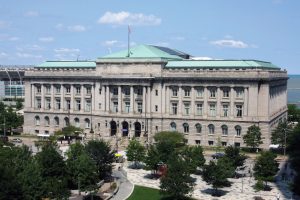
Cleveland survived the crisis with moderate reduction in city services, a remarkable accomplishment. Now, in a time when some big city mayors seem to think that their primary job is to make easier the lives of CEOs and developers, Jackson has focused on using city government to help the citizens of Cleveland. On the role of city government, he says, “Our bottom line is not to make a profit. Our bottom line is to deliver a service”—whether that be education, healthcare, housing, even things as mundane as street lights and water meters (both of which Jackson has made a “smart city” priority).
Jackson’s vision emphasizes the fundamental building blocks of city life. He cares about fiscal discipline and training government employees so that they can help improve the lives of Cleveland’s citizens. He’s spearheaded a Plan for Transforming Schools—to help public school students be ready for and get into college—and a Higher Education Compact, to help them succeed once they’re there. In partnership with the four major local hospital systems, including the renowned Cleveland Clinic (the largest employer in the state, with some 50,000 employees), Jackson created a Healthy Cleveland Initiative, so that Clevelanders could remain productive and well for as many years as possible. And he’s worked with developers and union leaders to invest hundreds of millions of dollars in Cleveland’s neighborhoods.

It would be premature to say that every problem is solved in Cleveland. There’s still too much crime, too much homelessness, too many inequalities.
But the throughline of Jackson’s career in public life is his insistence that the purpose of leading a city is to promote social and economic equity, rather than simply making an inclusive city one priority among many or a beneficial consequence of general economic growth. “Our economy is really growing,” he explains. “The problem is the disparity of who benefits from that.” It’s a problem that cities around the country are struggling with: A growing concentration of wealth can lead to shiny new buildings, great restaurants and expensive condos, but what about everyone else? Does the city just give up on its middle class and its poor? “We have to have inclusion and equity,” Jackson insists. “We have to eliminate the disparities in education, healthcare, quality of life…People in the private sector want to do it, but they don’t know how. Part of my job is to say, ‘Yeah, I’ve got an idea for you.’ So we talk a lot about stakeholder return, as opposed to shareholder return.” Economic growth in Cleveland has to benefit all its citizens; in fact, benefiting everyone is the point of economic growth.
In articles to come over the course of 2020, Worth, in partnership with the city of Cleveland, will be taking a closer look at some of the people, organizations and institutions that have contributed to Cleveland’s resurgence. As we do, it’s worth bearing in mind Jackson’s philosophy of economic inclusion, because it shapes the city and guides Cleveland’s progress. Bolstered by its communities, its resilience and its leadership, Cleveland has an opportunity now to set its course for decades to come. “How do we take this opportunity to transform Cleveland in a way that has a more sustainable outcome, in terms of longevity?” Jackson asks. “You can only do that if the end goal is equity.”
